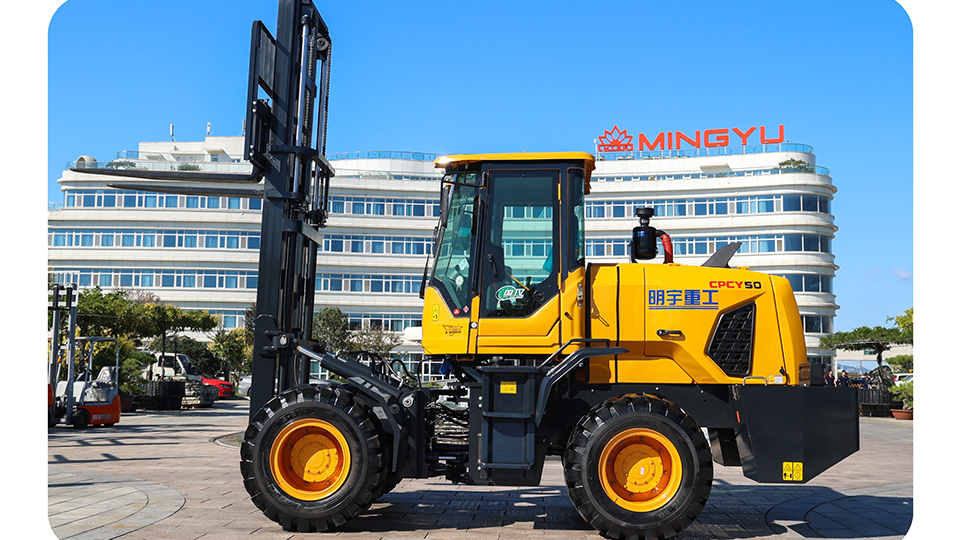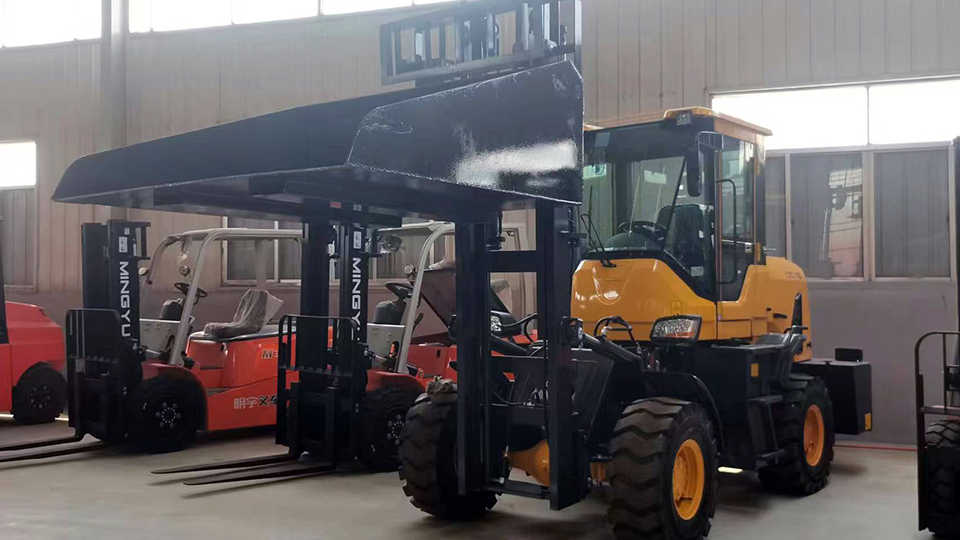
A Comprehensive Guide to EPA Regulations for Electric Forklifts
The world of material handling is undergoing a significant transformation. Driven by a global push for sustainability, reduced operational costs, and improved indoor air quality, the traditional internal combustion (IC) forklift is being rapidly replaced by its electric counterpart. This shift, however, raises a critical question for businesses: "Do electric forklifts require EPA clearance?"
The short answer is no, but the complete picture is more nuanced. While electric forklifts are not subject to the same stringent emissions regulations as IC engine-powered equipment, they are not entirely exempt from environmental and safety oversight. This article will provide a detailed, 2000-word technical overview of the relevant regulations, focusing on the differences between electric and IC forklifts, and will delve into the specific requirements that apply to electric equipment, from battery management to local and state-level mandates.
The Core Distinction: Tailpipe Emissions vs. Point-of-Use Emissions
To understand why electric forklifts don't require EPA clearance in the same way as their IC counterparts, we must first grasp the fundamental difference in how they operate and, consequently, how they are regulated.
Internal Combustion Engine Forklifts: These forklifts operate on fossil fuels like gasoline, propane, or diesel. The combustion process within their engines releases a variety of pollutants into the atmosphere. The U.S. Environmental Protection Agency (EPA) is the primary federal agency responsible for regulating these emissions. The EPA's regulations for non-road heavy equipment, which include IC forklifts, are designed to limit the release of harmful substances such as:

Nitrogen Oxides (NO
x): A major contributor to smog and acid rain.
Carbon Monoxide (CO): A colorless, odorless, and toxic gas that reduces oxygen delivery to organs and tissues.
Particulate Matter (PM): Tiny particles that can penetrate deep into the lungs and cause respiratory and cardiovascular problems.
The EPA's Tier standards (e.g., Tier 4) set strict limits on these emissions, and manufacturers of IC forklifts must certify that their engines meet these standards. This certification process is what is commonly referred to as "EPA clearance."
Electric Forklifts: In stark contrast, electric forklifts are powered by batteries that drive electric motors. This process produces zero tailpipe emissions at the point of use. There is no combustion, no exhaust pipe, and therefore, none of the regulated pollutants mentioned above are released into the immediate work environment. This key difference is why electric forklifts are inherently exempt from the emissions-based EPA clearance required for IC models. The EPA's regulations for non-road engines are specifically concerned with the pollutants created by combustion, a process that is entirely absent in an electric forklift.
However, "zero emissions" is a term that refers to the equipment's operation, not its entire life cycle. The environmental impact of electric forklifts is tied to the manufacturing process of their batteries and the source of the electricity used to charge them. While these factors are crucial for a complete environmental analysis, they are not currently the subject of federal EPA clearance requirements for the equipment itself.
The Regulations that DO Apply to Electric Forklifts
While they sidestep the need for emissions clearance, electric forklifts are still subject to a different set of regulations, primarily focused on safety, maintenance, and the handling of hazardous materials. These regulations are often managed by agencies like the Occupational Safety and Health Administration (OSHA), with some overlap with the EPA, particularly concerning the handling of batteries.
1. OSHA Regulations: Battery Management and Charging
The most significant regulatory oversight for electric forklifts comes from OSHA, which focuses on workplace safety. OSHA Standard 1910.178, which covers powered industrial trucks, contains specific subsections dedicated to the safe handling of electric forklift batteries.
Battery Charging Stations: OSHA mandates that designated battery charging areas be established and equipped to prevent accidents and health hazards. These requirements include:
Ventilation: Battery charging, especially with traditional lead-acid batteries, can produce hydrogen gas, which is highly flammable. Adequate ventilation is required to disperse these fumes and prevent a build-up that could lead to an explosion.
Fire Protection: The charging area must have readily available fire extinguishing equipment.
Spill Neutralization: Facilities must be provided for flushing and neutralizing spilled electrolyte (the acid in lead-acid batteries). This includes a sufficient water supply for a plumbed eyewash and, for larger installations, a drench shower.
Prohibition of Open Flames: Smoking, open flames, sparks, and electric arcs must be strictly prohibited in the charging area.
Battery Handling: OSHA also has strict rules for the physical handling of batteries, which are extremely heavy and contain corrosive chemicals.
Lifting Equipment: Proper lifting beams or other approved material handling equipment must be used when moving batteries.
Personal Protective Equipment (PPE): Employees who handle batteries must wear appropriate PPE, including face shields, chemical splash goggles, and acid-resistant gloves and aprons.
Training: Only trained personnel are permitted to charge or change batteries. This training must include emergency procedures for acid splashes.
While these are OSHA regulations, their purpose aligns with the broader environmental and public health goals of the EPA. The proper handling and disposal of hazardous materials like battery acids, and the mitigation of explosion risks, are areas where the two agencies' concerns intersect.

2. State and Local Regulations: The Rise of Zero-Emission Mandates
While federal EPA regulations are focused on IC engine emissions, some state and local governments are taking a different approach by directly regulating the type of equipment that can be used. The most notable example is California, which often sets the precedent for environmental regulations across the U.S.
The California Air Resources Board (CARB): In June 2024, CARB passed the Zero-Emission Forklift (ZEF) regulation. This landmark rule does not require a "clearance" for electric forklifts, but rather, it creates a phase-out schedule for large spark-ignition (LSI) forklifts (those running on propane, gasoline, or natural gas). The regulation effectively mandates a transition to zero-emission alternatives, such as battery-electric and hydrogen fuel cell forklifts.
Key aspects of the CARB ZEF regulation include:
Phase-Out Schedule: A timeline for phasing out LSI forklifts, with different deadlines for large and small fleets.
Reporting Requirements: Fleet operators are required to submit reports to CARB detailing their forklift inventory and compliance efforts.
Exemptions: The regulation includes exemptions for specific use cases, such as low-use forklifts or emergency equipment.
This kind of regulation is a powerful example of how the regulatory landscape is shifting. Instead of regulating emissions from IC engines, these new rules are designed to accelerate the adoption of zero-emission technologies. While the EPA is the primary federal authority on vehicle emissions, CARB is a powerful state agency that often receives waivers from the EPA to enact its own, stricter regulations under the Clean Air Act. The CARB ZEF regulation is a crucial development to monitor, as it could be a model for other states and even federal policy in the future.
3. EPA's Emergency Planning and Community Right-to-Know Act (EPCRA)
While the EPA does not clear electric forklifts for emissions, it does have a role in the broader chemical safety of the facilities where they are used. The EPCRA requires facilities that store certain quantities of hazardous chemicals to report them to state and local emergency planning commissions.
Forklift Batteries as Hazardous Chemicals: The lead-acid batteries used in many electric forklifts contain sulfuric acid, which is a hazardous chemical. If a facility's total inventory of sulfuric acid (including that within the batteries) exceeds the established threshold quantities, the facility must comply with EPCRA's reporting requirements, which include submitting a Material Safety Data Sheet (MSDS) and a Tier II inventory form.
This is not a "clearance" for the forklift itself, but a reporting requirement for the facility that uses and stores the equipment. It highlights the fact that while electric forklifts are clean at the point of use, their components—specifically the batteries—can fall under federal environmental and safety regulations.
Conclusion: The Path to Compliance is Clear, but Not Unregulated
So, to return to the original question: "Do electric forklifts require EPA clearance?" The answer is a definitive no, at least in the traditional sense of emissions certification for IC engines. Electric forklifts are a "clean" technology in the context of their operation, producing zero tailpipe emissions and therefore not falling under the scope of the EPA's non-road engine regulations.
However, this does not mean they are unregulated. Businesses operating electric forklifts must be vigilant about a different set of compliance requirements:
OSHA Safety Standards: Adhering to strict regulations for battery charging, handling, and maintenance to ensure a safe work environment.
State and Local Mandates: Paying close attention to evolving regulations, particularly in states like California, which are actively phasing out IC equipment in favor of zero-emission alternatives.
EPA Hazardous Material Reporting: Understanding and complying with EPCRA requirements if the facility's battery inventory exceeds established thresholds for hazardous chemicals.
The transition to electric forklifts is a positive step for both the environment and workplace health. The technology eliminates the direct release of harmful pollutants, reduces noise pollution, and can significantly lower a company's carbon footprint, especially when powered by renewable energy. However, it is essential for fleet managers, safety officers, and company leadership to recognize that the regulatory landscape is not a vacuum. The focus has simply shifted from managing combustion emissions to ensuring the safe and responsible use, maintenance, and eventual disposal of the technologies that power this new generation of equipment. By understanding and complying with these new rules, businesses can fully reap the benefits of electric forklifts while maintaining a safe, efficient, and environmentally responsible operation.
Name: selena
Mobile:+86-13176910558
Tel:+86-0535-2090977
Whatsapp:8613181602336
Email:vip@mingyuforklift.com
Add:Xiaqiu Town, Laizhou, Yantai City, Shandong Province, China